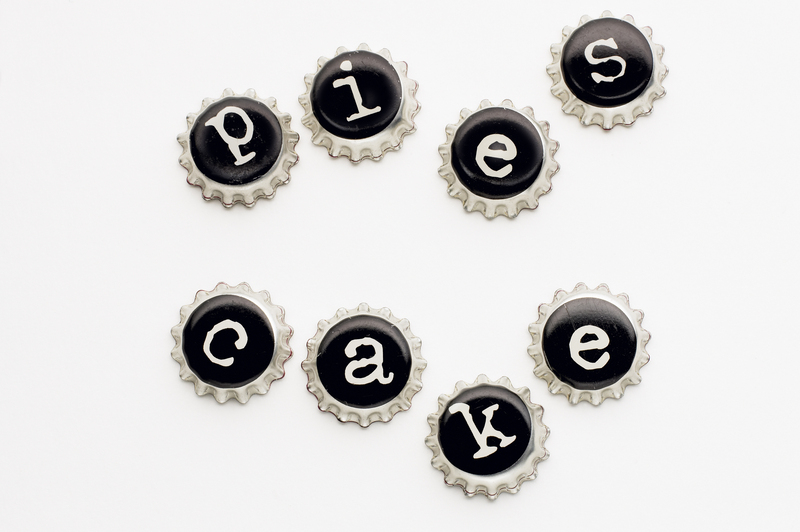A Practical Approach to Cutting Household Waste
In today's modern world, reducing household waste is more than a trend—it's a necessity. Many families seek simple and effective strategies to shrink their waste footprint, save money, and create a healthier planet for future generations. In this comprehensive guide, we'll explore a practical approach to cutting household waste, packed with actionable tips, inspiring ideas, and sustainable solutions that truly make a difference.
Why Cutting Household Waste Matters
Every year, millions of tons of trash are sent to landfills. A significant portion of this waste comes from everyday households. The impact of household waste extends far beyond our homes--affecting the environment, public health, and even our wallets. Here's why reducing your household waste is so important:
- Environmental Preservation: Reduces landfill overflow and pollution.
- Conserves energy and reduces the demand for finite resources.
- Cost Savings: Minimizes expenditures on disposables and wasted food.
- Positive Community Impact: Encourages neighbors, friends, and family to adopt sustainable lifestyles.

Evaluating Your Household Waste
Before you begin cutting waste at home, it's helpful to assess what and how much you throw away. Performing a quick waste audit allows you to:
- *Identify which items end up in the trash most frequently*
- Spot easy wins for reduction or reuse
- Develop a personalized plan for minimizing output
How to Conduct a Simple Waste Audit
- Collect your household garbage for a week.
- Sort the contents into categories: food, plastics, paper, glass, metal, textiles, and others.
- Note which categories dominate and brainstorm ways to reduce each type.
This hands-on approach to assessing household waste provides clarity and guides your practical reduction strategies.
Effective Strategies for Reducing Household Waste
The following strategies are proven ways to help your household waste less and live better. Whether you're starting your zero-waste journey or fine-tuning your sustainability efforts, these tips will empower you to make lasting changes.
1. Be Mindful When Shopping
- Plan Meals Ahead: Prevent food waste by buying only what you need.
- Buy in Bulk: Purchase products in bulk to reduce excess packaging and single-use containers.
- Choose Reusable Over Disposable: Opt for items like cloth napkins, glass containers, and reusable bags.
- Support Local: Local markets often use less packaging than supermarkets.
2. Avoid Single-Use Products
One of the simplest paths to minimizing household landfill waste is skipping disposable items entirely. Examples include:
- Replacing paper towels with washable cloths
- Using refillable water bottles
- Avoiding single-use cutlery and plates
- Choosing bar soap over liquid in plastic bottles
- Switching to a safety razor instead of disposables
3. Compost Your Organic Waste
Food scraps and yard waste make up a large share of urban rubbish. Composting these at home gives new life to what would otherwise be landfill fodder. Compost enriches your garden, supports biodiversity, and cuts methane emissions.
- Set up a simple compost bin in your yard or use a countertop composter.
- Compost fruit and veggie scraps, coffee grounds, tea bags, eggshells, and shredded paper.
- Avoid composting meat, dairy, and oily foods unless you have an advanced system.
4. Recycle Right
Improper recycling leads to waste contamination, making it crucial to follow local guidelines. For effective household waste recycling:
- Sort recyclables by type (paper, cardboard, plastic, glass, metal).
- Rinse containers to prevent food contamination.
- Check which plastics your area accepts--look for recycling codes.
- Stay up-to-date with changes in municipal recycling programs.
5. Reduce Food Waste
It's estimated that up to one-third of all food produced ends up as waste. Here's how to cut food waste in your household:
- Store food properly—use airtight containers and rotate pantry items.
- Repurpose leftovers into soups, salads, or casseroles.
- Label freezer items and schedule "use-up" days in your meal plan.
- Learn creative recipes that utilize every part of produce (e.g., beet greens, broccoli stems).
6. Repair, Repurpose, and Donate
Think twice before sending old clothes, appliances, or toys to the landfill. Repair what you can, transform items for new uses, or donate them to local charities.
- Sew torn clothing or upcycle old fabric into cleaning rags.
- Donate working electronics to schools or nonprofits.
- Repurpose glass jars as storage or planters.
- Give children's books and toys a second life with community groups.
How to Cut Specific Types of Household Waste
Paper Waste
- Switch to digital bills and bank statements.
- Use both sides of paper for printing or note-taking.
- Unsubscribe from junk mail lists to cut down paper clutter.
Plastic Waste
- Replace plastic wrap with beeswax wraps or silicone lids.
- Buy refillable cleaning and personal care products.
- Avoid microbeads in cosmetics, which pollute waterways.
Textiles and Clothing
- Shop second-hand for clothing and home textiles.
- Host clothing swaps with friends and neighbors.
- Use damaged textiles as stuffing for pet bedding or DIY projects.
Hazardous Household Waste
- Safely dispose of paint, batteries, and electronics at certified centers.
- Reduce usage of hazardous chemicals by choosing natural or non-toxic alternatives.
- Store hazardous items properly to prevent leaks and contamination.
Engaging the Whole Household
Reducing household waste is most effective when everyone pitches in. Here are creative ways to get your family or roommates involved:
- Hold regular check-ins to set waste-reduction goals.
- Gamify the process--see who can pack the lowest-waste lunch or come up with the best upcycling idea.
- Assign kids fun jobs, like collecting compost or sorting recyclables.
- Share progress and celebrate milestones with sustainable rewards.
Tools and Resources for Success
Apps and Planners
- Food waste tracking apps help you monitor what you throw away.
- Shopping list apps can reduce impulse purchases and food spoilage.
Local Community Initiatives
- Join community clean-up events or tool libraries.
- Participate in local composting or recycling programs.
- Stay informed by attending sustainable living workshops in your area.
Helpful Online Resources
- Websites such as Earth911 and Love Food Hate Waste offer practical tips for managing and reducing waste.
- Follow sustainability bloggers and social media groups for inspiration and support.
Challenges & Solutions on the Journey to Less Waste
Adopting a sustainable lifestyle doesn't happen overnight. Many people encounter roadblocks, such as:
- Limited recycling facilities
- Unsupportive household members
- Confusing eco-labels or greenwashing
- Lack of time for meal planning or composting
Overcoming Common Hurdles
- Start small: Change one habit at a time and build from there.
- Educate yourself: Learn to spot misleading packaging claims and choose truly sustainable options.
- Communicate openly: Share your reasons for reducing waste and invite your household to join you.
- Seek community: Connect with local and online zero-waste groups for encouragement and tips.

The Benefits of a Low-Waste Lifestyle
Embracing practical household waste reduction isn't just good for the planet--it offers real advantages at home:
- Financial savings from buying less and preserving what you have
- Less clutter and easier organization
- Greater self-sufficiency and learning new skills
- Pride in making a positive difference to your family and the world
Conclusion: Start Your Journey to Less Waste Today
Cutting household waste is both achievable and rewarding when you take small, practical steps. By being mindful of what you buy, reuse, recycle, and compost, you can make a powerful impact. Start with a simple waste audit, set realistic goals, engage your household, and celebrate your progress.
Remember, every little action counts in the quest for a cleaner, more sustainable planet. The practical approach to cutting household waste is about progress, not perfection. Make one change today—and watch the benefits multiply for your home and the earth.
Ready to take the first step? Choose one tip from this guide and commit to it this week. Your sustainable future starts now!